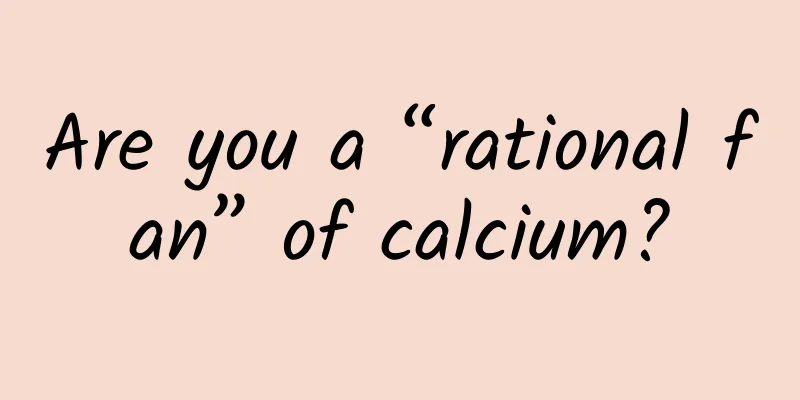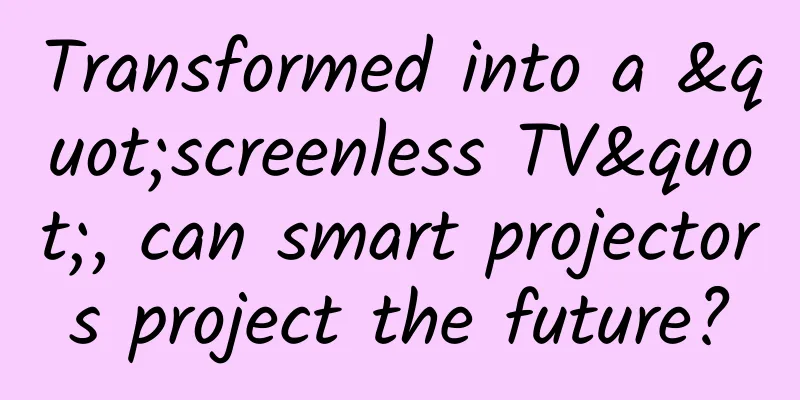Can eating ginkgo nuts cure diabetes? Can soaking ginkgo leaves in water lower blood pressure and blood lipids? Improper consumption may...

|
gossip Ginkgo is a perennial woody plant of the Ginkgoaceae family and the Ginkgo genus. It is a rare tree species that is unique to China and a relic of the Mesozoic era. Because of its beautiful shape, green leaves in spring and summer, and yellow leaves in autumn, it is quite beautiful. It is often used as a garden tree and street tree, and can be seen in many cities today. In addition to its ornamental value, there are also claims that eating ginkgo nuts grown on ginkgo trees can treat diabetes, and soaking fresh ginkgo leaves in water can lower blood pressure and blood lipids . Are these true? Copyrighted stock images, no reproduction is authorized analyze The truth is that both statements lack scientific basis and may cause new health problems if you are not careful. Ginkgo nuts are also called "white nuts". Like cycads, ginkgo is a dioecious gymnosperm and does not produce fruit. Ginkgo nuts are actually the seeds of ginkgo, or more precisely, the kernels with the fleshy outer seed coat removed. They are named after their white shells. Ginkgo is rich in nutrients, containing a certain amount of vitamin C, vitamin B2, carotene, calcium, phosphorus, iron, potassium, magnesium and other trace elements, as well as ginkgolic acid, hydrogenated ginkgolic acid, hydrogenated ginkgolic acid, ginkgo alcohol, ginkgo phenol, pentacylglycerol and other ingredients. Can eating ginkgo nuts really cure diabetes? There is no relevant record in medical books, nor clinical evidence to support the effect of ginkgo in improving blood sugar. Diabetic patients are also not suitable for eating ginkgo, which is still high in calories. 100 grams of dried ginkgo kernels contain about 68 grams of starch, 13 grams of protein and 3 grams of fat. Why is there a saying that eating ginkgo nuts can cure diabetes? This may be related to ginkgo biloba leaves. Ginkgo leaf extract has a certain improvement effect on microvascular lesions caused by diabetes, but ginkgo nuts do not have this effect. Since ginkgo leaf extract has medicinal effects, can soaking fresh ginkgo leaves in water also improve blood pressure and blood lipids? Copyrighted stock images, no reproduction is authorized Ginkgo leaf soaked in water Can it improve blood pressure and blood lipids? Drinking ginkgo leaf tea not only fails to improve blood pressure and blood lipids, but drinking too much will cause other health problems . Although ginkgo nuts and ginkgo leaves have been included in the "Chinese Pharmacopoeia", this does not mean that they can be used as both medicine and food at will. The flavonoids contained in ginkgo leaves are its main active ingredients. Clinically, they are mainly manifested in the form of ginkgo leaf preparations, which do have the effect of promoting blood circulation, removing blood stasis and unblocking meridians. However, the effect of flavonoids in health preservation is still under study, and more than 95% of flavonoids cannot be absorbed into the body through the form of soaking in water. What's more, the flavonoids contained in the few leaves used for soaking in water are not many. Therefore, it is useless to drink fresh ginkgo leaves soaked in water even if you drink a lot. Ginkgo seeds dropped on the roadside Can I take it home and make ginkgo nuts for consumption? Not recommended. On the one hand, ginkgo seeds and ginkgo nuts are two different things. The fleshy part on the outside not only has a peculiar smell, but also contains ginkgolic acid (the general term for ginkgolic acid and ginkgolic phenolic acid), which can corrode the skin and is toxic if not handled properly. On the other hand, fresh ginkgo also contains a lot of ginkgolic acid, the content can reach 200 mg/kg, this kind of substance has clear allergenicity, cytotoxicity and immunotoxicity . When a certain amount of toxic substances is ingested, poisoning symptoms will appear, including irritability, nausea, vomiting, abdominal pain, diarrhea, coma, convulsions, breathing difficulties, and even death. Not only ginkgo nuts, but also ginkgo leaves contain ginkgolic acid, so it is not recommended to drink them in water. In addition, the ginkgo seeds and leaves on the roadside will be contaminated by harmful substances such as smoke, automobile exhaust, etc., and the ginkgo trees are treated with drugs all year round to prevent diseases and pests. Therefore, the ginkgo nuts and ginkgo leaves on the roadside cannot be "picked", let alone eaten. What are the precautions for eating ginkgo? Copyrighted stock images, no reproduction is authorized First of all, ginkgo nuts are not suitable as dried fruit snacks. Improper consumption or excessive consumption may cause poisoning. Secondly, ginkgo nuts cannot be eaten raw. Only high-temperature cooking methods can remove most of the toxic components in ginkgo nuts, reduce allergenicity, and ensure food safety. Furthermore, the amount consumed must be controlled. It is recommended that adults should not exceed 10-20 pills, children should not exceed 5 pills, and infants and young children should not consume it. At the same time, pregnant women, women during menstruation, people who have undergone surgery, people with allergies, and people taking anticoagulants or painkillers should not eat it. in conclusion Eating ginkgo nuts cannot cure diabetes. Ginkgo nuts are high in calories and are not suitable for diabetics. Drinking ginkgo leaves soaked in water cannot improve blood pressure and blood lipids. Moreover, ginkgo nuts contain a lot of ginkgolic acid, which has clear allergenicity, cytotoxicity and immunotoxicity. Improper intake will cause poisoning symptoms. Ginkgo leaves also contain ginkgolic acid, so it is not recommended to soak in water. Author: Zhang Yu, researcher at the Chinese Center for Disease Control and Prevention, supervisor of medical doctorate and master's degree students Reviewer: Zhang Na, Associate Researcher, Doctoral Supervisor, Peking University School of Public Health References: 1. Shen Pian. Pharmacology and Clinical Application of Traditional Chinese Medicine (Part 2)[M]. Jilin Science and Technology Press, 2020.6. 2. Zeng Zhaolong. Practical Clinical Chinese Medicine[M]. Henan Science and Technology Publishing, 2020.6. 3. Qi Lijuan, Li Guojun, Gao Shan. Health hazard assessment of ginkgolic acid compounds in ginkgo nuts[J]. Journal of Toxicology, 2021, (4): 267-273,279. 4. Shao Jiping, Wang Bochu, Chen Xin, et al. Research progress on the medicinal value of Ginkgo biloba extract [J]. Journal of Chongqing University (Natural Science Edition), 2003, 26 (1): 130-134. Planning丨Zhong Yanping Editor|Li Mengxin The article is produced by "Science Refutes Facts" (ID: Science_Facts). Please indicate the source when reprinting. The cover image and images within this article are from the copyright gallery. Reprinting and quoting them may lead to copyright disputes. |
<<: A fish has two "hands", and it can't swim, so it has to "walk"?
>>: 100 light years away, a "perfect solar system" was discovered
Recommend
APP promotion and operation experience: 3 common misunderstandings of APP promotion that novices must know!
There are tens of thousands of apps in mainstream...
Hand-drawn large scientific device | Successfully accelerated the first electron beam, what exactly is HEPS?
March 14, 2023 The 13th Five-Year Plan for Nation...
From Weibo to Toutiao to Zhihu, where are the three content giants going?
Weibo's market value today has reached 10 bil...
Introduction to Xiaomi news resources and advertising formats
As more and more application markets begin to dev...
What content is prohibited from being posted in WeChat circles? What are the usage specifications?
The following content is prohibited in WeChat Cir...
Bojinhui Xiaobai Welfare Online Earning Project, long-term stable monthly income of 5,000
Bojinhui Xiaobai Welfare Online Earning Project, ...
After viewing more than 100,000 information flow ads, I summarized these 4 optimization directions!
After reading this article, you will get the foll...
What operations are involved in after-sales maintenance of game server rental and hosting?
What operations are involved in after-sales maint...
Zhulu Academy_Traditional Ancient Eight Characters Practical Course Baidu Cloud Download
Zhulu Academy · Traditional Ancient Eight Charact...
New regulations on fishing ban in 2022: When is the fishing ban period? Attached is the latest fishing ban time in various places!
In order to effectively manage the fishing ban in...
The first generation iPhone sold at a sky-high price. Outdated electronic products = garbage?
As we all know, the masterpieces left by masters ...
A 4.5-magnitude earthquake occurred in Dongyuan County, Heyuan City, Guangdong! Learn the basic principles of emergency earthquake avoidance quickly
According to the official measurement of the Chin...
Essential knowledge for mobile terminal development
[[140777]] There are more and more mobile device ...
OPPO Reno5 Pro: A people-oriented, 173-gram “light” streaming imaging device
Although it has only been more than half a year s...
Product operation and promotion: plan a real event!
Planning is also a basic ability of operation. No...









![[Smart Farmers] Debunking rumors: Will eating genetically modified foods change a person’s genes?](/upload/images/67f24631e1d92.webp)